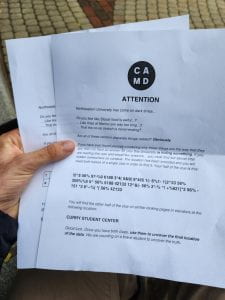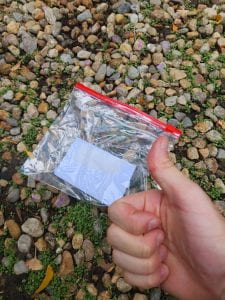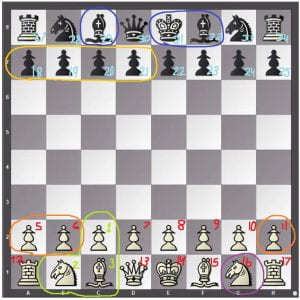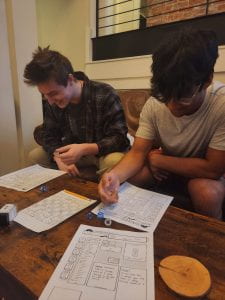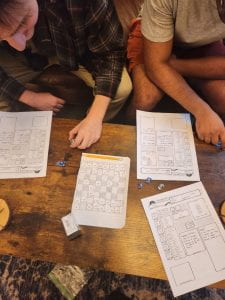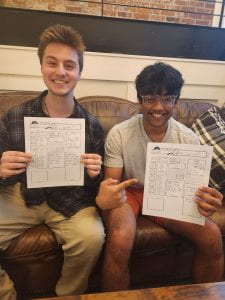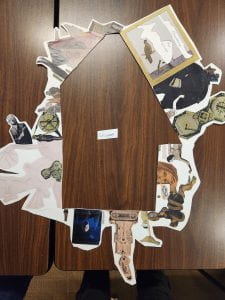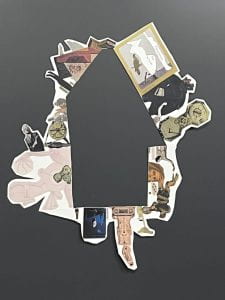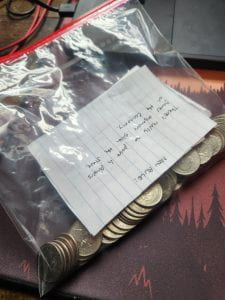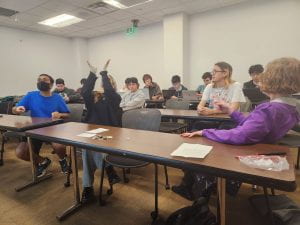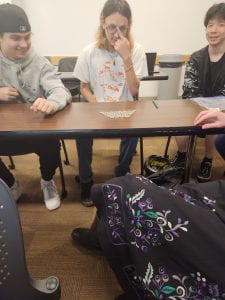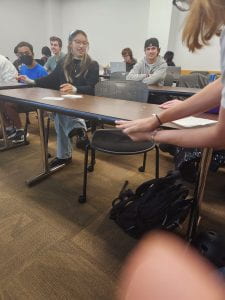Overview:
‘Childhood’ is a short abstract game in which you play as a small green dot collecting other, smaller red dots. The controls are as minimal as it gets- simply move your mouse to drive the green dot agonizingly slowly towards each dot with no real purpose or goal aside from collecting dots to earn points. At the top of the screen is a clock that starts at zero and counts up as you play, giving the impression that the game simply never ends. The twist? ‘Childhood’ does end, but it takes seventy-five years of real time to complete (that is, if you were to play it normally.) After a few minutes, you are introduced to the main mechanic- you have the ability to hold the spacebar and fast forward time. Doing so allows you to see the game develop into something different as the hours, days, and years fly by in a matter of seconds. Slowly your objective morphs from simply ‘collect dots’ and becomes increasingly complex and hectic. It’s up to the player to decide how long they want to play each section of the game, or if they’d like to skip it almost entirely and see the next section.
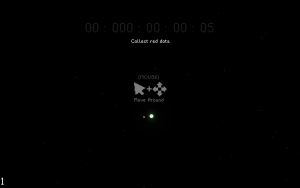
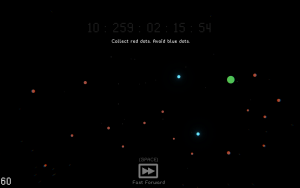
Artist’s Statement:
This game began as a simple, and probably very relatable, thought that I had- “I really miss being a kid. Things were so simple back then.” Becoming an adult is pretty fun, don’t get me wrong, but when you stop and think about how easy and fun your life was as a little kid compared to the stress and responsibilities of college life- homework, job search, finances, etc… It seems like that period in time is almost idyllic. The funny thing, of course, is that when you are living that part of your life, you pretty much want nothing more than to grow up as fast as possible. Each new age seems like a milestone, something to ‘conquer’ and be treated more like a grown-up. From this juxtaposition the idea took shape- life is like a game that seems boring while you play it, but in retrospect, you wish you had stopped and enjoyed those ‘boring’ moments more than you really did. Presentation-wise, I took inspiration from Art Games such as “The Marriage,” which sought to represent the concept of cooperation and role within a marriage using abstract visual art and simple gameplay. I found this to be very effective in bringing my own idea to life- wanting to use things like the size of the player and their movement speed to imply things about the different stages in a person’s life.
If you’re reading this, I think you should really just play the game before I spoil everything- but I’ll go ahead and explain my thought process behind some of the mechanics/design choices and what they were meant to represent. The clock, of course, is a human lifespan (that is, the average American lifespan is about 75 years.) I thought it would be really interesting to be able to experience an entire life on ‘fast forward,’ watching them slowly get bigger (grow up), get faster (have more energy and drive), before finally regressing (getting old) and coming to a complete stop at the end of their life. The various stages were meant to increase in complexity, and despite being more ‘engaging’ than the gameplay at the very start (which represents a person’s childhood), will quickly grow overwhelming and impossible to manage during the final stages in which you are effectively forced to lose all your points.
Thoughts:
I’m mostly very happy with how it turned out- I think the visuals and sound design were especially good. I think if I had had more time, I would have liked to improve the gameplay progression a bit more to push the ‘overwhelming’ feeling I was going for towards the end of the game. What I have now is successful, but I think that it still feels more monotonous than it does stressful in the final stages and I could have improved that design.
Tools/Assets used:
- Unity Engine/Visual Studio w/ C# language
- Aseprite (UI graphics)
- dafont.com (game font)
- freesound.org (BG music & sound effects, all were creative commons 0)
Download on Itch.io:
https://ragefordragons.itch.io/childhood
(You will need to use the password GAME1850 to access the page.)

